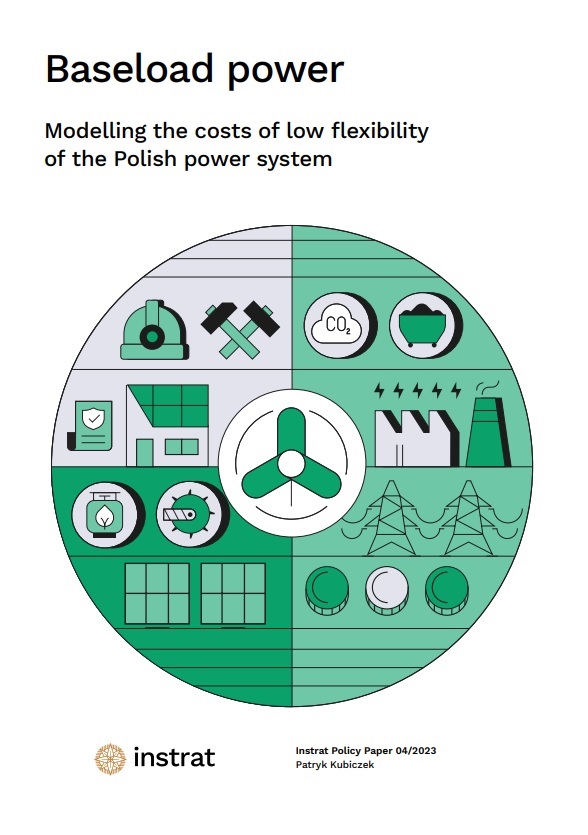Poland continues to produce increasingly large quantities of cheap and clean energy from renewable sources. Barriers to the Polish economy’s further decarbonisation include the low flexibility of the Polish power system and the continuous provision of the so-called baseload by coal- and gas-fired power plants, forced by technical factors. This leads to curtailment of renewable energy generation, which, for the time being, is infrequent but will increase in the future. How significant is the problem, and which challenges are the most pressing? To answer these questions, Instrat experts extended an in-house model of the Polish electricity system with new functionalities, which allowed them to estimate the costs of low flexibility of the Polish power system in the 2030 perspective.
Using the PyPSA-PL tool, Instrat carried out modelling of two scenarios for the 2030 installed capacity in the Polish power system: a baseline and an ambitious scenario. The level of RES capacity in the baseline scenario is inspired by the Ministry of Climate and Environment’s recent update proposal to the Energy Policy of Poland until 2040. On the other hand, the ambitious scenario of RES capacity stems from Instrat’s report titled “Poland cannot afford medium ambitions” from March 2023.
Reducing technical constraints on RES penetration will bring tangible systemic and financial benefits
Currently, the electricity generation by the so-called non-synchronous sources, which include wind turbines and photovoltaic panels, is limited once they have reached around 55-60% of the country’s instantaneous electricity mix – meanwhile, some of the conventional power plants continue to operate. Therefore, a question is raised: instead of limiting non-synchronous sources, why can’t the conventional power plants be shut down, which would save coal and gas and decrease emissions? In the new analysis, Instrat experts discuss the main reasons why conventional power plants operate during windy or sunny weather and analyse the impact of those technical constraints on the country’s annual electricity mix. The analysis showed that increasing the capacity of the Polish power system to enable its penetration by non-synchronous sources to around 80-85% would save approximately 1.3 billion EUR in the baseline scenario and as much as 2.1-3 billion EUR in the ambitious scenario by 2030. This corresponds to an average saving of 5-11 EUR on each megawatt-hour of electricity consumed in the Polish power system. “The scale of possible savings requires action by the energy market regulator and the transmission system operator. Firstly, energy market participants need to know the key reasons why, on certain sunny days, electricity production from RES is curtailed despite the continued operation of conventional power plants. Secondly, the need for the conventional baseload operation should be reduced. Ireland acts as a good example, as its transmission grid operators have set themselves a 2030 target of an achievable 95% share of non-synchronous sources in the electricity mix. This means that the operation of conventional power plants could be reduced to 5% of instantaneous electricity demand at any time,” summarises Patryk Kubiczek, author of the analysis.
Increased flexibility of the Polish power system is a prerequisite for a successful energy transition
Costs caused by the limited flexibility of the power system and frequent curtailment of renewable energy will increase more than proportionally to the growing RES capacity. In the ambitious scenario for RES deployment, we may have to waste up to 15-20% of their total production potential by 2030. These costs will be, at least partially, shifted to the end consumers, and the continued shutdowns of solar and wind power plants may discourage future investments and slow down the deployment of these technologies. This will make it more difficult for Poland to meet its CO2 emission reduction commitments. “Just a few years ago, the prospect of rapid RES development in Poland was not a common assumption – today, even government documents aim at an approximate 50% share of RES in electricity production in 2030. Even achieving this moderately ambitious target requires increasing the flexibility of the Polish power system,” explains Kubiczek.


